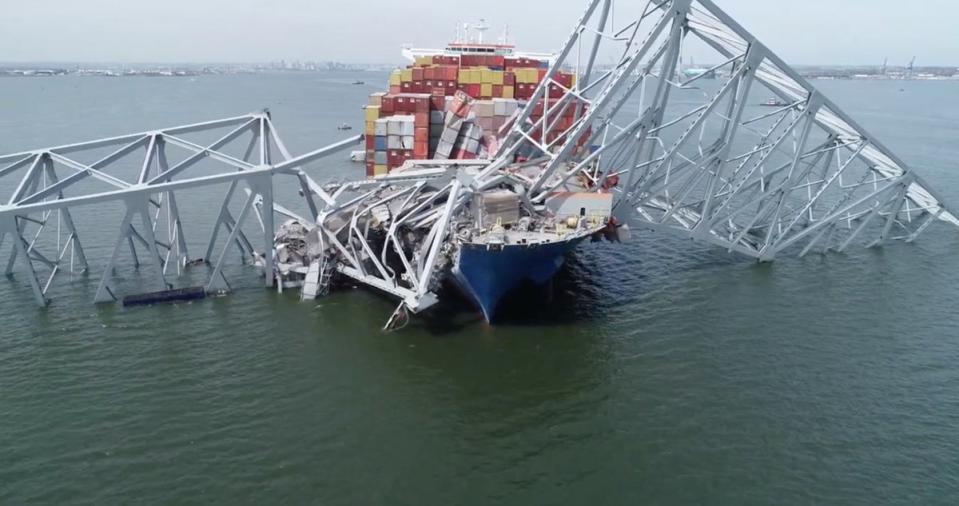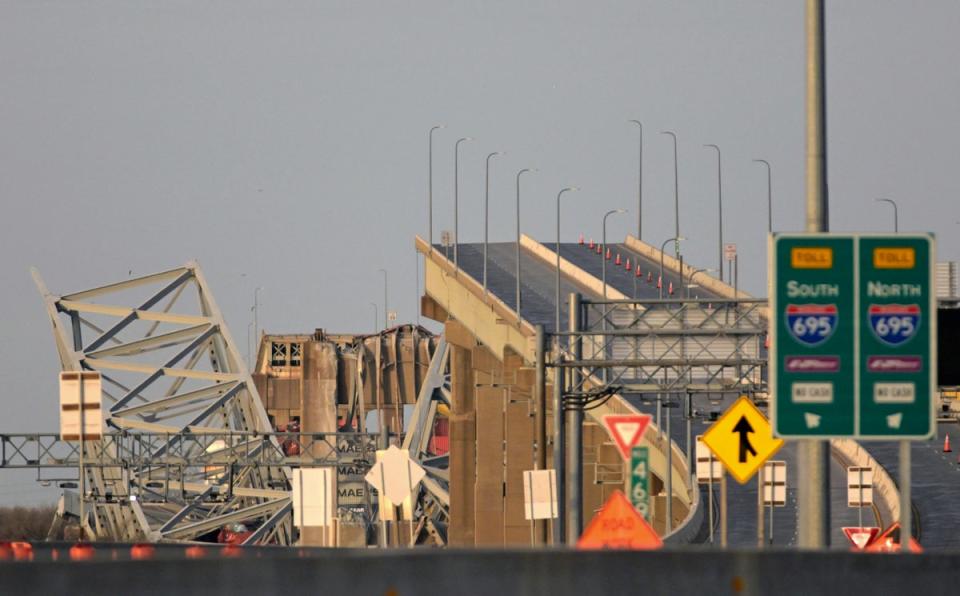‘Hero’ crew of ship which hit Baltimore Key Bridge saved lives by sounding mayday alarm moments before impact
Crew members onboard the Dali cargo ship have been praised for saving countless lives by raising a mayday alarm just moments before the vessel hit the Baltimore Francis Scott Key Bridge.
The Singapore-flagged shipping vessel slammed into one of the pillars at around 1.30am (local time) on Tuesday, causing a long span of the bridge to instantly crumple into the Patapsco River.
At least eight people went into the water and six of them – all construction workers – were presumed dead due to the frigid water and the length of time elapsed since the accident.
Follow all the latest updates with our live blog here.
The alarm call issued by the ship’s all-Indian crew moments before the crash allowed authorities to stop cars from entering the bridge from both sides, saving lives in the process.
The vessel notified the Department of Transportation (MDOT) that they had lost control of the ship and that a collision with the bridge was possible.

Following the mayday alarm, a dispatcher’s 12-second warning crackled over the radio: “There’s a ship approaching that’s just lost their steering so until they’ve got that under control we’ve got to stop all traffic.”
Within about 90 seconds, police officers responded that they had managed to stop vehicle traffic over the bridge in both directions.
One official said he was about to drive onto the bridge to alert a construction crew, but it was too late.
With the ship barreling toward the bridge at "a very, very rapid speed", authorities had just enough time to stop cars, Maryland governor Wes Moore said.
"These people are heroes," he said. "They saved lives last night."
Two people were rescued from the waters, with one in critical condition. Search operation for the remaining six construction workers was suspended on Tuesday night, but is expected to resume on Wednesday morning with very little hope of finding them alive.
Among the missing were people from Guatemala, Honduras and Mexico, according to diplomats from those countries. The Honduran man was identified as Maynor Yassir Suazo Sandova.
Dramatic videos show the 1.6-mile-long bridge crumpling into the water, with the headlights of vehicles seen in the footage as it collapsed.
There still was traffic moving across the span, and some vehicles appeared to escape with only seconds to spare.
Maryland governor Wes Moore has declared a state of emergency while the FBI in Baltimore said they were “on scene”, while it has been confirmed that there is no indication of terrorism.
“Never would you think that you would see, physically see, the Key Bridge tumble down like that. It looked like something out of an action movie,” said mayor Brandon Scott, calling it “an unthinkable tragedy.”

Synergy Marine Group - which owns and manages the Dali - confirmed the vessel hit a pillar of the bridge while it was in control of two pilots.
It confirmed all 22 crew members, including the pilots, were accounted for and there were no reports of any injuries. The ship had only travelled four miles from the Seagirt Marine Terminal on its journey to Sri Lanka when it crashed.
A loss of propulsion, which according to an unclassified report was the reason behind the collision, is the failure of the propulsion system to steer and navigate the vessel.
As a result of the incident and ongoing recovery efforts, all Baltimore port traffic is suspended until further notice.
Tuesday’s disaster may be the worst US bridge collapse since 2007 when the I-35W bridge in Minneapolis collapsed into the Mississippi River, killing 13.
From 1960 to 2015, there were 35 major bridge collapses worldwide due to ship or barge collisions, according to the World Association for Waterborne Transport Infrastructure.

